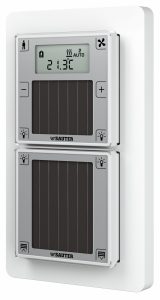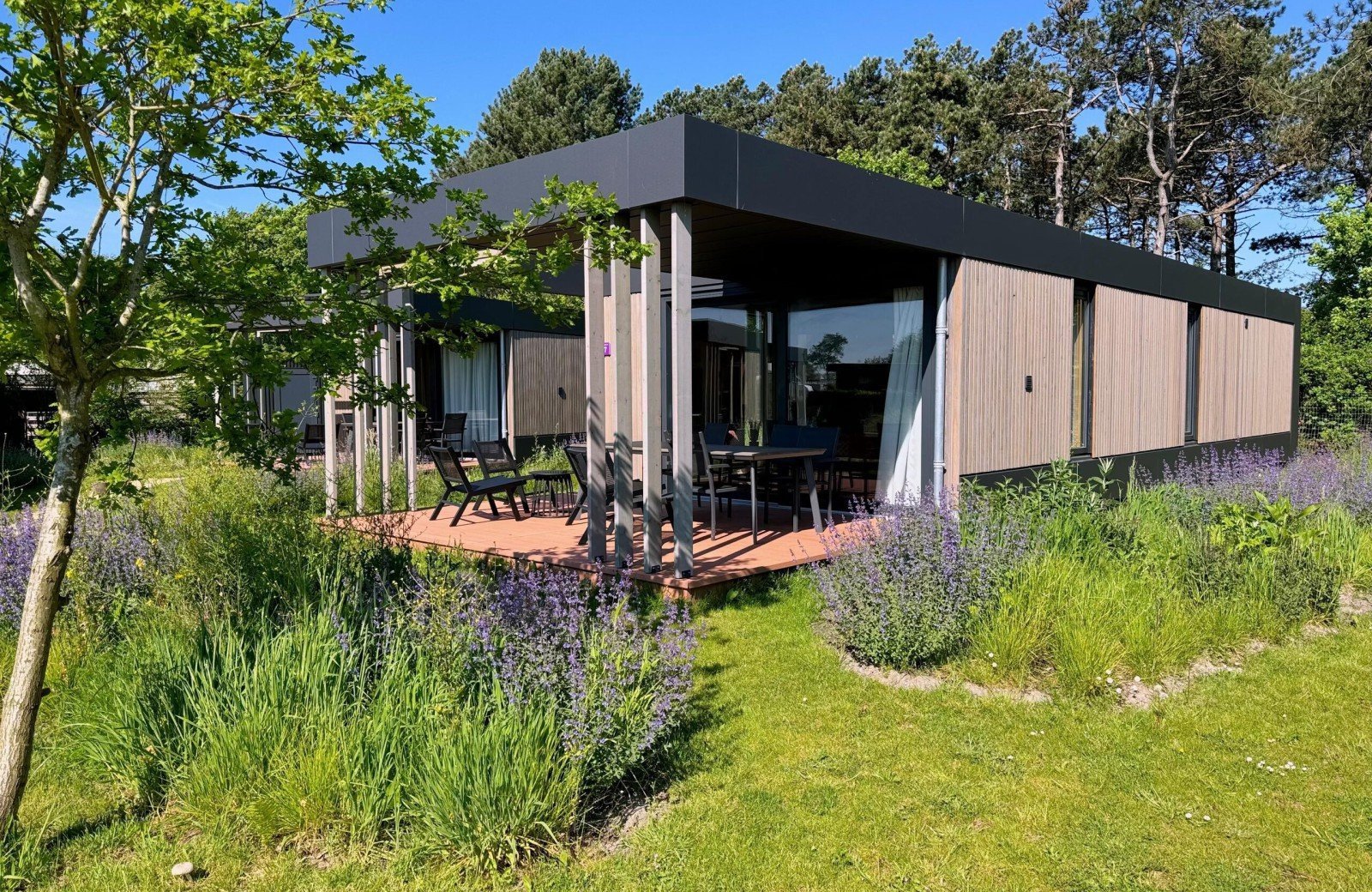Employee Wellness
Issue 02-2019:
read all articles online
read as pdf
Das Internet der Dinge (IoT) ist allgegenwärtig. Bis 2025, so aktuelle Schätzungen, sind rund 75 Milliarden Geräte miteinander verbunden1, fünfmal so viele wie noch vor zehn Jahren. Dabei liegt der eigentliche Mehrwert des IoT darin, Daten zu sammeln, zu analysieren und zu nutzen – zum Beispiel, um Arbeitsumgebungen angenehmer zu machen.

Bereits 2012 informierten Experten wie Mark Jewell2 mittels konkreter Beispiele darüber, dass Mitarbeiter in einem angenehmen Umfeld um 15% effektiver und bis zu 15% weniger krank sind. In jüngster Zeit berichtete der Harvard Business Review3 ähnliche Ergebnisse. Einen Nutzen von 6.500 US-Dollar pro Mitarbeiter und Jahr hätten Unternehmen dadurch, wohingegen die Installation von Gebäudeautomation lediglich 40 US-Dollar pro Mitarbeiter und Jahr koste. Dr. Claire Penny4 von IBM denkt in eine ähnliche Richtung: So beliefen sich die durch arbeitsstressbezogene Krankheiten erzeugten Kosten in Großbritannien auf 6 Milliarden Pfund pro Jahr.
Sensoren als „digitale Raumversteher“ helfen, Arbeitsumgebungen zu optimieren
Kein Wunder also, dass viele Unternehmen enorme Summen in die Schaffung komfortabler (und kreativer) Umgebungen für ihre Mitarbeiter investieren – einschließlich in Gebäudeautomationssysteme zur Überwachung und Steuerung wichtiger Parameter wie Temperatur, Luftfeuchtigkeit, Luftqualität und Lichtverhältnisse. Dafür werden genaue Daten aus jedem Raum oder Bereich des Gebäudes benötigt. So lässt sich zum Beispiel über die intelligente Lichtsteuerung eine kontinuierliche, sich im Laufe des Tages verstärkende oder abschwächende Beleuchtung erzeugen. Die notwendigen Daten stammen vor allem von Sensoren – sie sind der Schlüssel zu Gebäudeautomation und IoT-Anwendungen.

EnOcean-basierte Sensoren lassen sich einfach in jedem Raum oder sogar an jedem Schreibtisch platzieren, sodass jeder Mitarbeiter die eigene Arbeitsumgebung nach Belieben steuern kann.
Kabellos ist alternativlos
Wie lassen sich diese Daten in bestehenden oder neuen Gebäuden leicht zugänglich machen? Kabel zu verlegen oder Batterien zu warten, ist kostenintensiv, störungsanfällig und umweltbelastend. Zum Einsatz kommen deshalb drahtlose und wartungsfreie Sensoren. Werden solche Sensoren mit Gebäudeautomation (Gateway) kombiniert und in die Cloud verlagert, können Rohdaten von überall abgerufen werden. Diese sensorgesteuerte Echtzeitverbindung zwischen realen Standorten und ihrem digitalen Zwilling hilft bei der Analyse und Verbesserung von Arbeitssituationen.
Unternehmen wie Microsoft und IBM sind seit Kurzem Promotor-Mitglieder unserer Technologie-Allianz. Weitere Schwergewichte wie NTT Communications, Tencent oder Softbank bieten ebenfalls IoT-Lösungen für intelligente Gebäude auf Basis des interoperablen EnOcean-Funkstandards an. Auch viele „traditionelle” Gebäudeautomationsanbieter haben ihr Standardportfolio um Datenanalyse und Cloud Services erweitert. Ausschlaggebend für diesen Erfolg sind neben der Energy Harvesting-Technologie mit ihren Vorteilen auch das umfangreiche, herstellerübergreifende und interoperable Produktökosystem sowie die einfache Installation und Bedienung. Die Investition in ein EnOcean-basiertes Gebäudeautomationssystem ist daher alternativlos.
Quellen:
- Statista.com
- Mark Jewell, “Selling Energy”, www.SellingEnergy.com
- Harvard Business Review März 2017
- Dr. Claire Penny, IBM, Juni 2019
Fotos: Sauter
New articles in Smart Spaces
The Internet of Things (IoT) is ubiquitous. According to current estimates1, the number of connected devices is projected to amount to 75.44 billion worldwide by 2025, a fivefold increase over ten years. The real added value of the IoT lies in collecting, analyzing and using data – for example, to optimize working environments.

As early as 2012, experts such as Mark Jewell2 were providing concrete examples indicating that if employees are in a comfortable environment, they are 15% more effective and are absent up to 15 percent less often. More recently, Harvard Business Review3 reported similar results, putting a figure of $6,500 per employee per year benefit to companies, compared to a figure of $40 per employee per year to install building automation. IBM’s Dr. Claire Penny4 estimates the cost of work stress-related illnesses in the UK at 6 billion pounds per year.
Sensors help to optimize working environments

EnOcean-based sensors can easily be placed in every room or even at every desk, enabling each employee to adjust their own working environment to their comfort levels.
It therefore comes as no surprise that multiple leading companies are investing huge sums in creating comfortable (and creative) environments for their employees, including building automation systems to monitor and control key parameters such as temperature, humidity, air quality and light levels. This requires exact data from every room or area of the building. For example, intelligent lighting control can be used to generate continuous lighting that increases or decreases over the course of the day. The necessary data comes primarily from sensors which are the key to building automation and IoT applications.
Wireless is a must
How can this data be made easily available in our existing or new buildings? Pulling cables and maintaining batteries are both prohibitive due to costs, disruption and environmental considerations. That’s why energy harvesting-based, wireless sensors have become the choice of the building and data service community. If such sensors are combined with a building automation (gateway) and moved to the cloud, raw data can be accessed from anywhere. This sensor-driven, real-time connection between real locations and their digital twin helps to analyze and improve workplace situations.
Companies such as Microsoft and IBM have recently joined our technology Alliance as promoter members along with further giants such as NTT Communications, Tencent and Softbank, which are also offering IoT solutions for smart buildings based on the interoperable EnOcean radio standard. In addition, many “traditional“ building automation providers have added data analysis and cloud services to their standard offerings. It’s not just the energy harvesting aspect driving this success. The large, multi-vendor, interoperable product ecosystem and ease of installation and operation are also helping to fuel this growth.
Thus the investment in an EnOcean-based building automation system becomes an obvious “no-brainer.”
Sources:
- statista.com
- Mark Jewell “Selling Energy”, www.SellingEnergy.com
- Harvard Business Review, March 2017
- Dr. Claire Penny, IBM, June 2019
New articles in Smart Spaces
Top articles

Microsoft: IoT-Sicherheit in der Cloud




